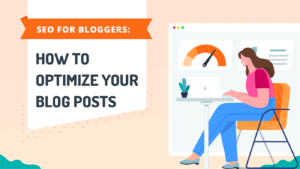Craft a Powerful SEO Title
Your blog title is the first thing readers and search engines notice. Include your primary keyword naturally. Keep it under 60 characters. Add power words or numbers to increase clicks. A strong title boosts visibility and attracts engagement.

Use Clean and SEO-Friendly URLs
Always customize your blog post URL. Keep it short and relevant. Remove unnecessary words like “and” or “the.” Include your focus keyword to improve search relevance. Avoid random characters or dates in the URL structure.
Write a Compelling Meta Description
Your meta description should summarize your content in 155 characters or less. Use active voice and include a call to action. Place your keyword near the beginning. A well-written meta description can increase your click-through rate.
Add Your Focus Keyword Naturally
Use your target keyword in the first 100 words. Sprinkle it throughout the content without overstuffing. Add it in subheadings where it fits. Keep your writing natural and engaging.
Use Header Tags to Organize Content
Break your content into clear sections using H2 and H3 headings. Header tags help readers scan content easily. They also help search engines understand your content hierarchy. Use secondary keywords in subheadings to increase keyword reach.
Optimize Images with Alt Text
Always rename your image files using relevant keywords. Add descriptive alt text to each image. Compress images to reduce load time. Fast-loading images improve user experience and help SEO.
Internal and External Linking
Add links to other relevant blog posts on your site. This helps readers discover more content. Link to credible external sources for added trust. Use anchor text wisely. Avoid generic phrases like “click here.”
Use an SEO Plugin Like Yoast
Install Yoast SEO or Rank Math on your WordPress site. These plugins guide you to improve content readability and SEO. Follow their suggestions to optimize title, meta, and keyword usage. Don’t rely only on plugins; apply your own judgment too.
Make Content Readable and Engaging
Write in short paragraphs. Use bullet points or numbered lists when needed. Add visuals like infographics or screenshots. Use transition words like “however,” “therefore,” and “moreover” to keep flow smooth. Always write for humans, not just for bots.
Improve Mobile Responsiveness
Use a mobile-friendly WordPress theme. Test your site on different devices. A responsive design improves user experience and reduces bounce rate. Google also favors mobile-optimized websites in search rankings.
Speed Up Your Website
Use caching plugins to reduce load time. Compress files and clean up unused plugins. Optimize your WordPress database regularly. Fast websites rank better and retain more visitors.
Focus on Quality, Not Just Keywords
Publish in-depth, useful content. Aim to answer your audience’s questions. Update outdated posts with fresh information. High-quality content naturally attracts backlinks and shares.
Encourage Comments and Engagement
Ask questions at the end of your post. Respond to comments quickly. Use a call-to-action to guide readers. User interaction signals quality to search engines.
Final Thoughts
SEO on WordPress isn’t just about plugins or keywords. It’s about delivering value while being search-engine friendly. With the right steps, your blog posts can rank higher and reach a larger audience.



